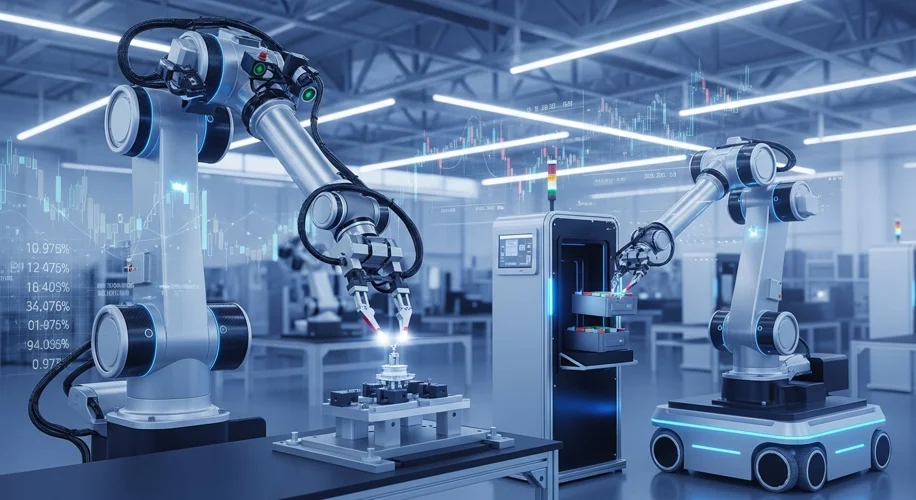You’ve probably seen headlines about robots taking over factories. But the real story isn’t just about automation. It’s about robotic autonomy – how these machines are becoming self-sufficient, and what that means for production costs and investment opportunities.
For years, industrial robots were powerful but dependent. They needed human oversight for maintenance, battery changes, and troubleshooting. This meant downtime, higher labor costs for support staff, and less efficient production lines. The cost-benefit analysis was always a balance.
Now, that balance is shifting. We’re seeing rapid advancements in what robots can do on their own. Think about robots that can self-diagnose issues and perform basic repairs. Or systems where robots can autonomously navigate to a charging station, swap out their own depleted batteries for fresh ones, and then return to work without human intervention. This isn’t a distant concept; it’s happening now in advanced manufacturing facilities.
What are the financial implications?
First, drastically reduced downtime. Every minute a production line is down, it costs money. Self-repairing and self-charging robots mean fewer stoppages. This translates directly into higher output and lower operational expenditure per unit.
Second, lower labor costs beyond direct production. It’s not just about replacing manual labor on the assembly line. It’s also about reducing the need for maintenance technicians, specialized operators, and oversight staff who traditionally manage robot fleets. This frees up human capital for more complex, value-added tasks like R&D, advanced programming, or strategic planning.
Third, scalability and efficiency. Factories can run longer, with less human input. This makes scaling production simpler and more cost-effective. Industries from automotive to electronics to logistics are already feeling this impact, driving down manufacturing costs and pushing profit margins.
Now, let’s address the ‘future of work’ angle. This shift isn’t about human obsolescence. It’s about a redefinition of roles. As robots handle the repetitive, often dangerous tasks, the demand for high-level programming, AI development, data analysis, and advanced systems integration will surge. For investors, this means looking at companies not just making the robots, but also those developing the AI and software that enable this autonomy. Also, consider the educational and training sectors that will need to equip the future workforce with these new skills.
The bottom line is clear: robotic autonomy isn’t just a tech marvel. It’s a fundamental economic shift impacting manufacturing, supply chains, and labor markets. Understanding these capabilities is crucial for anyone looking to navigate the evolving industrial landscape or identify promising investment avenues. Keep an eye on the companies leading this charge; their efficiency gains could translate into significant market advantages.

